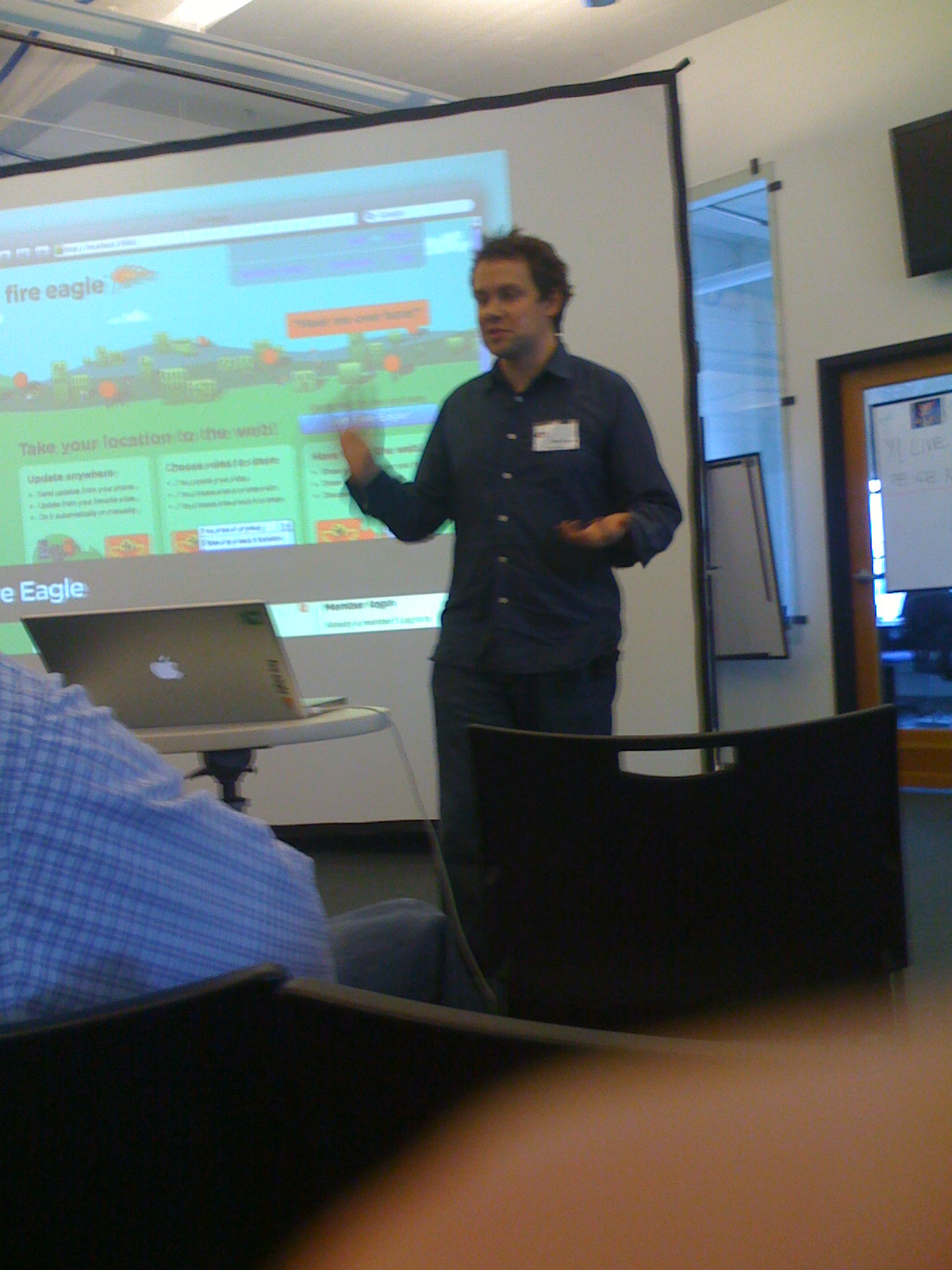
Yahoo Brickhouse division-head Tom Coates officially launched the Fire Eagle platform today to a packed room of San Francisco journalists, analysts and bloggers (and Yahoo cofounder David Filo).
The platform, in beta since March, is based on managing users’ location data to make online services smarter and more relevant to them. It basically does this by tying into a variety of location aware devices and services to update a user’s location. Users can also manually enter their location into Fire Eagle (requires a Yahoo account).
The online services that partner with Fire Eagle then grab this information and serve content accordingly. Part of today’s announcement was the unveiling of a handful of these services, which include hyperlocal content site Outside.in, blogging platform TypePad and social network Pownce.
“Location information adds context to the node,” said Pownce cofounder Leah Culver, adding that alerts for events, music and local promotions can be served accordingly.
 There are about 15 of these partners, and the list will likely grow as any online service can integrate the API to build features that pull in and utilize this location data in their own way. The platform is also hoped to improve over time with better/more pervasive location awareness.
There are about 15 of these partners, and the list will likely grow as any online service can integrate the API to build features that pull in and utilize this location data in their own way. The platform is also hoped to improve over time with better/more pervasive location awareness.
This will happen as more users have location aware mobile devices and use them as part of their daily lives (one of the expectations coming out of the transformation of mobile search). It could also happen as location awareness is integrated to a greater degree into the PC itself.
Given that the services that apply Fire Eagle’s location awareness are mostly online, as opposed to mobile (for now), it would make sense that more direct location awareness on the desktop will be more effective than its various tie-ins to mobile devices.
Coates agreed, stating that Fire Eagle was built to work with a number of Web services and applications, but also to be an open platform into which developing location aware technologies will be plugged on an ongoing basis.
“The platform is a switchboard between anything in the world that can update or use location information,” he said. “We wanted to build the platform and make it open so others could build on it.”
In other words, as location awareness on the desktop (see past analysis) develops, it will strengthen Fire Eagle to do its thing more effectively.
This will work together with its existing mobile updating to allow more accuracy and continuity. More importantly, it will be more passive, requiring the user to do less — always a boon for adoption. Of course, there are privacy concerns that are at odds with more automated/continuous location awareness, but it could nonetheless improve the platform’s capability over time.
Next up is the further development of the Web services that pull in Fire Eagle’s information. This will include lots of monetization opportunities around local targeting for small and large advertisers alike. The latter could see a particularly good opportunity, given that this type of targeting beats the current state of the art (IP and demographics).
In other words, Fire Eagle reveals exact location while behavioral information will fill in the blanks. This behavioral information will come about in the various ways users interact with the many online services — social networking, blogging, hyperlocal, etc. — that work with Fire Eagle. This could all add up to a novel local ad targeting tool.

This Post Has 0 Comments